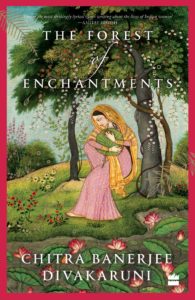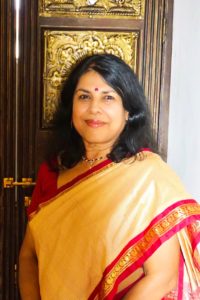I hope my Sita goes beyond labels to become a dynamic, strong-minded woman who doesn’t give up: author Chitra Banerjee Divakaruni
Chitra Banerjee Divakaruni’s new book, The Forest of Enchantments (published by HarperCollins India), is a retelling of The Ramayana, one of the world’s greatest epics. Here, the author places Sita at the centre of the novel: it is her version. The Forest of Enchantments is also a human story of some other women in the epic who are often misunderstood and marginalised, such as Kaikeyi, Surpanakha, Mandodari. In an e-mail interview with Ayushi Astha, author Chitra Banerjee Divakaruni says that it is only when we hear Sita’s story in her own voice that we value her fully.
You’ve ventured into Indian mythology before, with your book The Palace of Illusions. What was it about Sita that made you want to explore the character in such detail?
Sita is the greatest icon, perhaps, of Indian womanhood. Her story is at once epic and tragic. But I feel that she has been misunderstood greatly in our popular interpretations, and seen as meek and long-suffering. This has had a negative effect on how Indian women are expected to behave. I wanted my novel to highlight her strength and heroic nature.
A project as ambitious as this requires an extensive knowledge of the “original” story. Who were your sources or references for this book?
My major sources were Valmiki, Kamban, the Adbhuta Ramayan, and my favourite, the Bengali Krittibasi Ramayan. I also looked carefully at Tulsi Ramayan and the one by Chandrabati in Bengali, and folk songs about Sita.
How restricted are you by the so-called “factual” details of mythological stories? Do you like to work within the existing framework or take creative liberties with the narrative?
I like to stay within the existing plot and use my imagination and creativity to flesh out the characters and their motives and thoughts.

There are several books that look at the Ramayana from Sita’s perspective. Authors like Nabaneeta Deb Sen, Samhita Arni and others have written various interpretations of the Ramayana, and told Sita’s story. Was it important for you to go through these texts before you started writing your book or have you not read them in order to avoid these texts from influencing your perspective of what you wanted to tell about Sita?
I went through every text I could find because it was important for me to know what was out there. I wanted to make sure my book presented something unique and new.
If you could compare Sita with any woman in history, living or dead, who would it be?
She is truly incomparable.
Which book inspired you to become a writer?
I think the novels of Tagore, in general. I grew up reading them and thinking about his women, to whom he gives narrative voice so that many of them tell their own story.
You also teach creative writing at the University of Houston. What’s the most important piece of advice that you give to your students?
I tell them to write regularly and edit stringently. That’s the way one becomes a better writer.
Is your Sita feminist? Why do you think it important to re-read some mythological texts from the feminist perspective?
I hope my Sita goes beyond labels to become a dynamic, strong-minded woman who doesn’t give up, no matter how difficult the circumstance. It is only when we hear her story in her own voice that we value her fully. That is a major reason to re-read/re-construct epics and myths from a woman’s perspective. That is what inspires and helps women as they navigate their own difficulties.

If you had to pick a favourite character from all the books you’ve written so far, who would it be? Why is s/he your favourite?
Sita is my favourite right now. I love how she combines gentleness with strength, anger with forgiveness. Sita as I have imagined her is loving and adventurous in happy times. In dark times, she refuses to give up or compromise.
Do you think there are some ethical boundaries when it comes to writing about mythological figures?
I personally feel that we need to treat our myths and epics with respect. We should have a strong reason and understanding of why we want to re-write them. We should feel a closeness to the characters we are delineating. But I certainly would not presume to prescribe what other writers should write.
Do your interpretations of Draupadi and Sita have anything in common? If yes, what?
They are two complementary portrayals of female strength. They deal very differently with their misfortunes or troubles, but they are both inspiring. They never give up and they are always willing to learn from life. Ultimately, they grow in wisdom and spirituality and have a deep understanding of the human journey. I have learned a great deal about how to handle life’s challenges just from writing The Palace of Illusions and The Forest of Enchantments. My dearest wish is that my readers will find the books similarly valuable.
[The Forest of Enchantments by Chitra Banerjee Divakaruni, published by HarperCollins India. Price Rs 599]
[Photographs of Chitra Banerjee Divakaruni by Luckmi Pawa]


Comments are closed.